
#8052 Prussian Reserve Infantry



Dated: December 30, 2001, updated March 18, 2002.
Box cover, test sprue and painted figures.
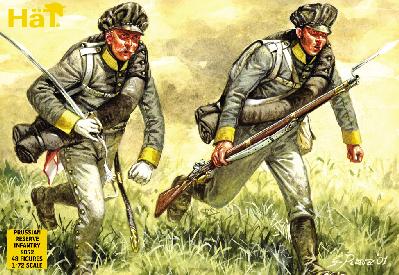
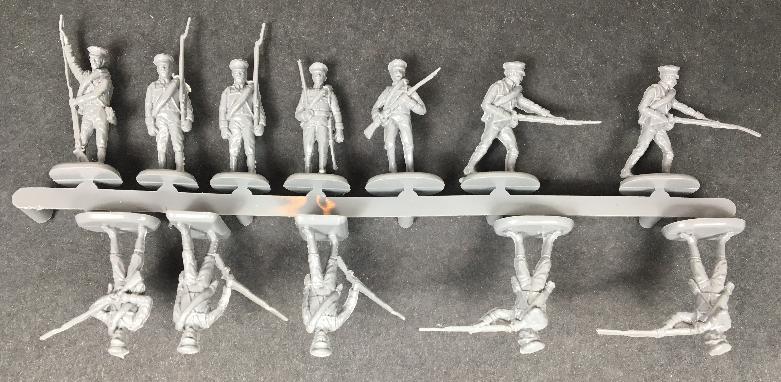
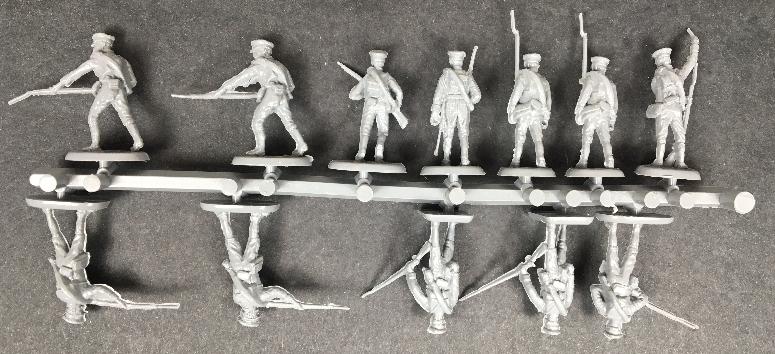
Figures below painted by Flavio Rossi (Italy).
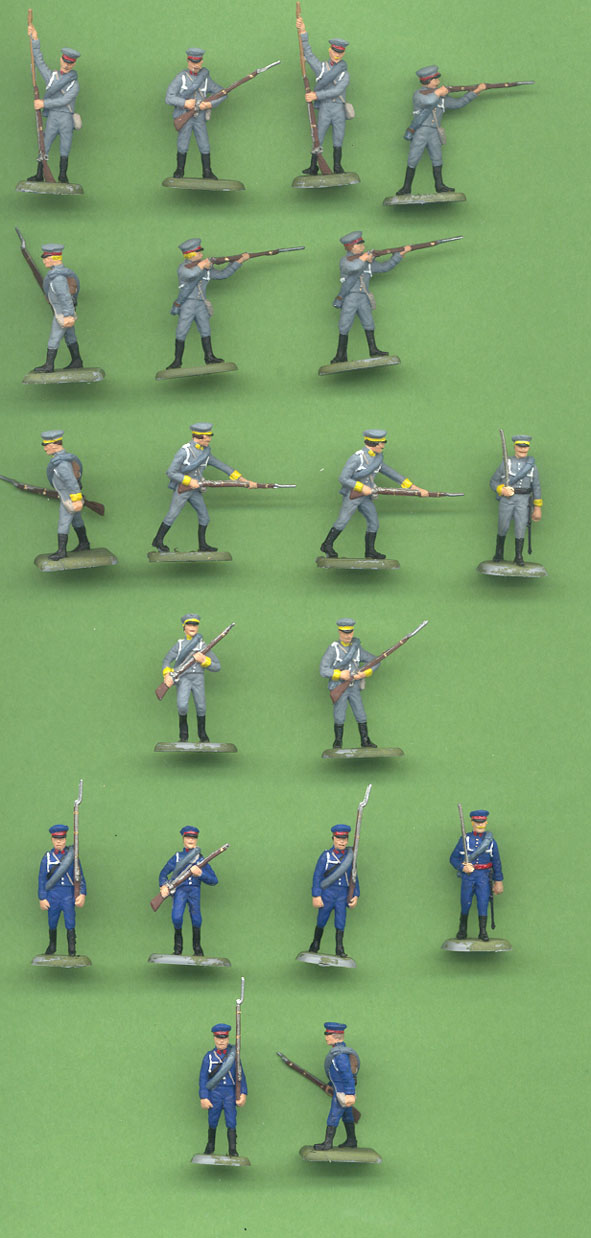
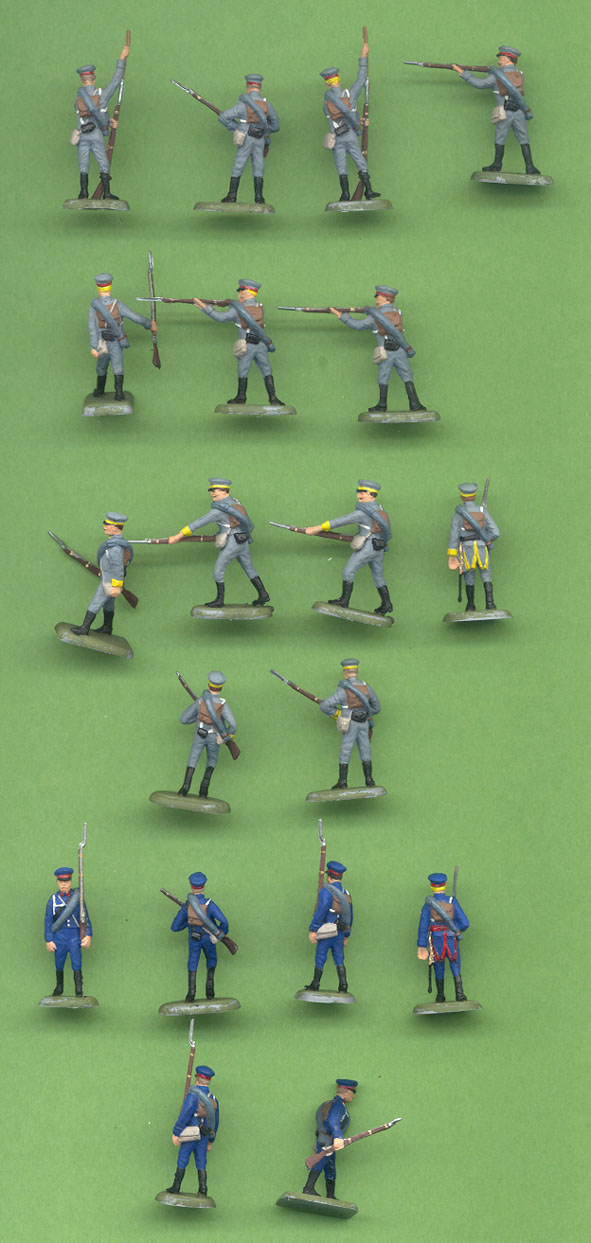
Figures below painted by Scott MacPhee (USA).
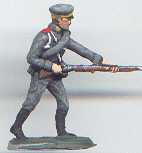
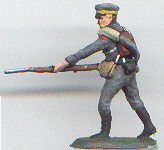
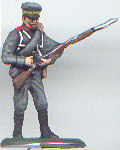
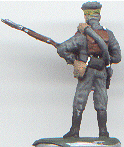
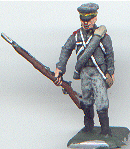
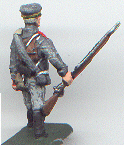










Story
One of the latest additions to the HäT range of scale figures is this 48-figure set featuring Napoleonic Prussian Reserve Infantry. The infantrymen are depicted in various battle positions and can be painted for extra realism, or not. Though you may use them in any setting, these figures are intended for use in conjunction with other sets in the 'Napoleonic' series which now includes a lot of other stuff. With wargamers in mind, HäT designers have ensured that the figures capture all the atmosphere of a real confrontation with the enemy. Included in this set is an officer with shouldered sword, standing firing men, marching men, men advancing at the trail, men advancing with bayonet extended, men running forward, men cocking musket and men ramming cartridge into musket. Dressed in a very chic monochromatic grey from top to bottom, these men are at home either on the battlefield or in an urban club setting. Furthermore, as a tribute to realism, there are minute differences in the heights of the figures, as well as lengths of their mustaches just as you would see in real life.
Note: This is one of the last useful Prussian uniforms not yet done. After the defeat by Napoleon in 1806 the size of the standing Prussian army was limited by the French. In order to prepare more men than allowed in the standing army the Prussians used the Kreumper system. This was a rather simple but ingenious system in which bodies of men were trained and then dismissed to be replaced by raw men who would then be trained and so on. This way a large army could be trained without increasing the size of the standing army. This system is still currently in use today by countries as diverse as Switzerland and Taiwan. They can have a large army at a moments notice without the cost of a large standing army. (Incidentally, that's the same system Boeing uses to maintain a large reserve of engineers in Seattle.)
Following the defeat after years of war, Prussia was poor and dressed her reservists in as simple a manner as possible. This set shows the simple grey tailess tunic, grey pants and grey cap worn by these men. In our eyes this might not look unusual but in the intensely colorful Napoleonic era, these men look positively drab and unready for war. These simple uniforms were worn all the way up to the battle of Waterloo. The difference between these men and the Landwehr is that the Landwehr is the militia.
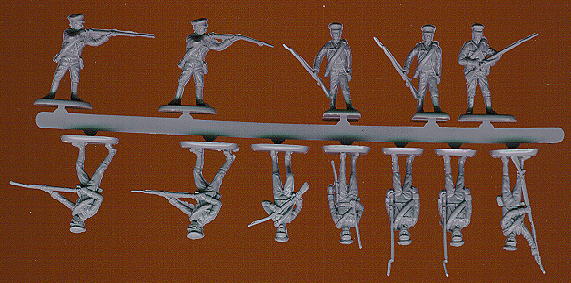
Box story:
After the defeat in the 1806/07 campaign the Prussian Army had to be reduced on Napoleon's order to just over 40,000 men. When Prussia allied herself with the Russians in 1813 to fight against Bonaparte the army had to be raised in short notice.
The regular infantry units each donated a cadre force of NCOs, officers and men. From this pool of trained reserve troops the so called "Krümper" reserve infantry battalions were formed by early 1813. These were then grouped together in regiments. Altogether 12 such reserve regiments came into being.
As Prussia was a poor state, the dress of these reserve regiments were initially very simple and consisted of a field cap and a jacket of grey or blue without coat tails and linen trousers. Later this initial dress was replaced by more regular coats but also by uniforms produced in England for the Portuguese Army, which gave the Prussian Army in the Liberation Wars of 1813 to 1815 a very colourful look. The "Ersatz" battalions which furnished the replacements for the line and reserve regiments had similar uniforms and often they just were incorporated directly into the line units in such a dress when no other one was available. Some Landwehr units also wore these short jackets. Hans-Karl Weiss, Germany
Parody of Airfix introductions of their figure sets from the 70's. All rights reserved. Any unauthorized or commerical use of content or images are violations of applicable laws and will be prosecuted to the fullest extent of the law. Copyright 2001-2, HäT Industrie.